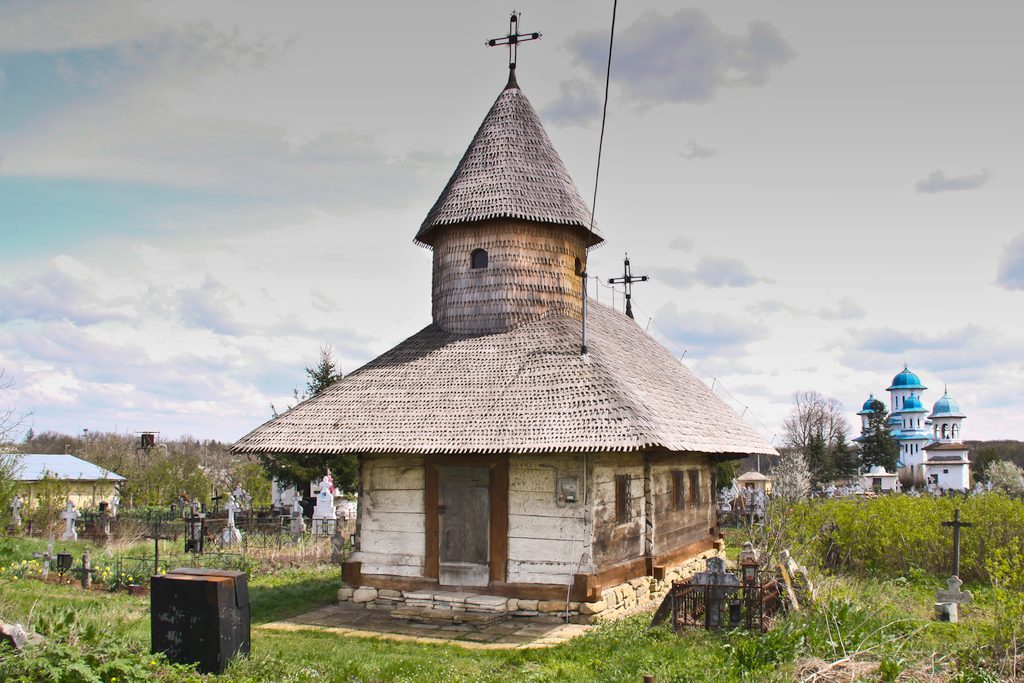

The building built in 1711 is placed today in the old cemetary in town. It does not originate in the south of the country. It was brought to Bujoreni in 1868, from a mountain village whose name was forgotten in time. Legend says that the move was done with twelve ox drawn carriages, probably over several weeks. Thanks to priest Stan Oncescu’s efforts, who facilititated the bringing of the church, he also became its founder. The church keeps its original architectural elements even today. Except for the porch, the roof with a stuffed up roof edge and the octagonal bell tower in the narthex, added with the moving of the building on the new location, the church did not suffer any major alterations. Among its most important elements is the inscription at the entrance in the narthex. Above the entry way, as well as on the altar table, the date when it was built is signed. The inscription is engraved with Cyrillic letters, because at the time of the church foundation this is how they would write in Romanian. As such, the construction is far older than the other churches in the area, dated in documents.
This church has a plan found in central Wallachia, with a narrower narthex than the nave. The altar is also narrower and finished rectangularly. The retreats are minimalistic, a few centimeters away from the corner bindings of the narthex. In the elevation you notice the oak beam walls with a facade and ending in smooth buttonholes, clerical, shaped like a swallow’s tail, very deep. The nave is lit by two windows towards the west and two towards the south, made on the place of others from the last restoration. In the vestibule there is a window towards the south. The altar room is lit by two windows. The wall between the vestibule and nave is full, open in the moddle just for a portal door. The portal bore the inscription from 1711 in the upper part. Specific to this portal are the three churches engraved in it, one on the left corner and two in the right corner. The altar is separated from the church through a simple wall, open by three ritual doors. The vestibule has a roof, while the nave and altar are closed with separated semicylindrical arches. The nave is hardened in the middle with a tie rod beam and the arch is supported in the middle by a double arch.
The wooden church is a historical monument and a product of the „mountain area”, of first class, written in the list of the national historical monuments. The church was restored in 2007, by the care of priest Popescu Adrian. The building was entered in the National restoring program of 2007 in the National office of historical monuments. Repairs were made by a team from Maramureș. The entreprenour from Baia Mare redid the floor, wood work, bolt wrappers and the lightning arrester installation. In October 2007, the restoration works were completed. After the repairs, the “Sf. Cuvioasa Paraschiva” Wooden church was resanctified, reopen and masses are being held in it. The holiday celebrating Saint Paraschiva church is celebrated on October 14th.
